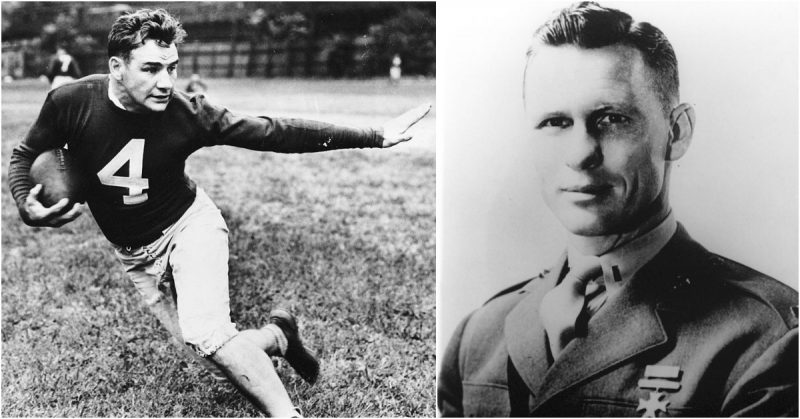In 1992 the movie A League of Their Own about the All-American Girls Professional Baseball League opened in theaters around the United States. The film was a fictionalized account of the formation of the league and its players and was a big hit.
The league was the idea of Philip K. Wrigley, of Wrigley Field fame, as a way to keep baseball in the public eye while many of the sport’s star male players, such as Joltin’ Joe DiMaggio, Ted Williams, and others were serving in the military.
Though men’s baseball did continue during the war, the women’s league was a way to keep people interested in the sport until the time came when men’s baseball became more competitive again. The women’s league was actually more successful than many imagined, at least for a time – it ended in 1954.
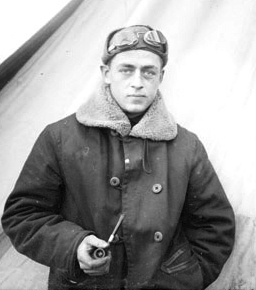
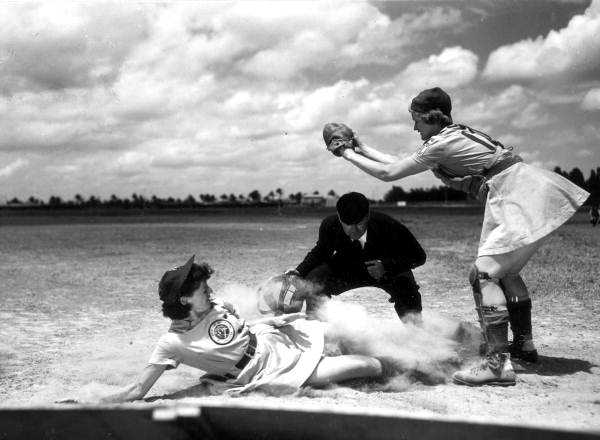
What many people today don’t know is that professional football went through many of the same trials and tribulations that baseball did during the war years. Making matters even worse for the owners and fans of the sport was the fact that even in the 1940s, professional football was not as popular as its college counterpart.
Even though the professional version had grown in popularity in the 1930s, college football still brought in larger crowds and more attention.
Adding to the wartime troubles for football was the fact that college football remained somewhat unaffected, as the players were mostly younger or exempt (at least temporarily) from the military draft. That meant that star college players kept playing, but star professional players found themselves in uniform.
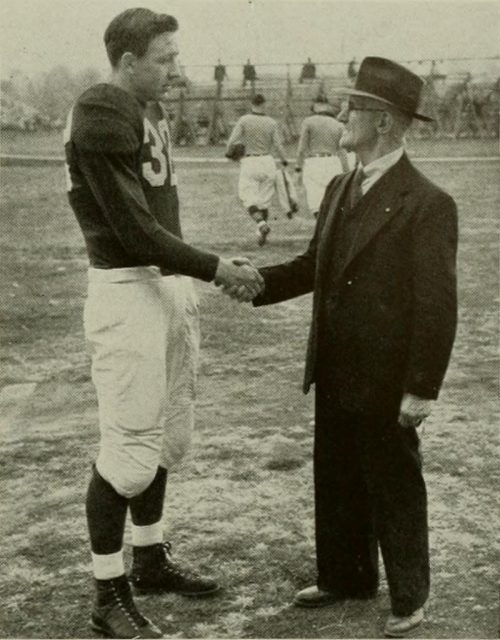
To keep people interested in the game, the National Football League (NFL) came up with sort of a gimmick, much like their baseball counterparts – they re-signed older, retired stars. The most famous of the returning players was Bronko Nagurski, who had played for the Chicago Bears and had retired in 1937. Nagurski, who became famous in college and the pros as a fullback, returned to football as a tackle.
Other (future) Hall of Famers included Green Bay quarterback Arnie Herber, who had retired in 1940, and halfback Ken Strong. Herber signed with the New York Giants and Strong returned to that team.
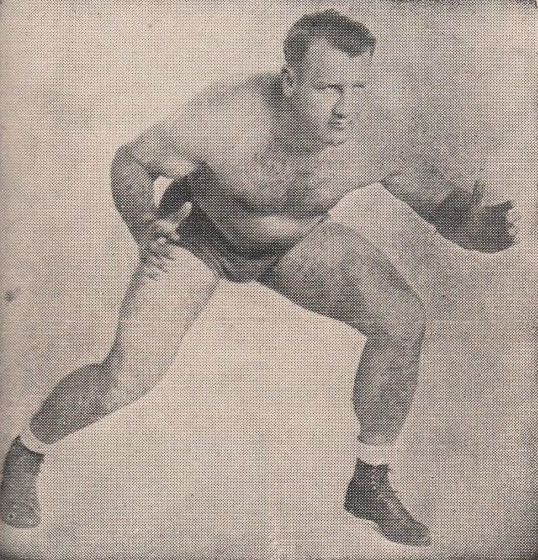
Teams as a whole went through hard times because of the war. The Cleveland Browns suspended play for 1943. Many people would be surprised to hear that the two Pennsylvania teams, the Pittsburgh Steelers and the Philadelphia Eagles, actually merged for 1943, and played in both cities. People dubbed the team “the Steagles.”
The “Steagles” only lasted one year, but in 1944 Pittsburgh combined with another struggling team, the Chicago Cardinals. The official name of this team was the catchy “Card-Pitt Combine” and they were so bad they went winless that year. Opposing teams ran over them so much that sportswriters and fans began calling the team (sorry, “Combine”) “the Carpets.”
The year 1945 saw the end of the “Combine,” but two teams that do not exist anymore, the Boston Yanks and the Brooklyn Dodgers (yes, football “Dodgers”) merged at that time and played as the “Yanks,” but left a city tag off the name.
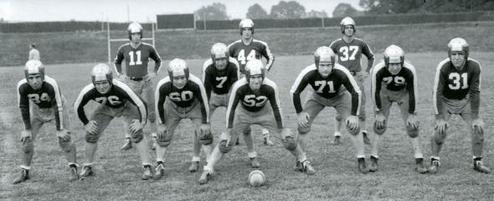
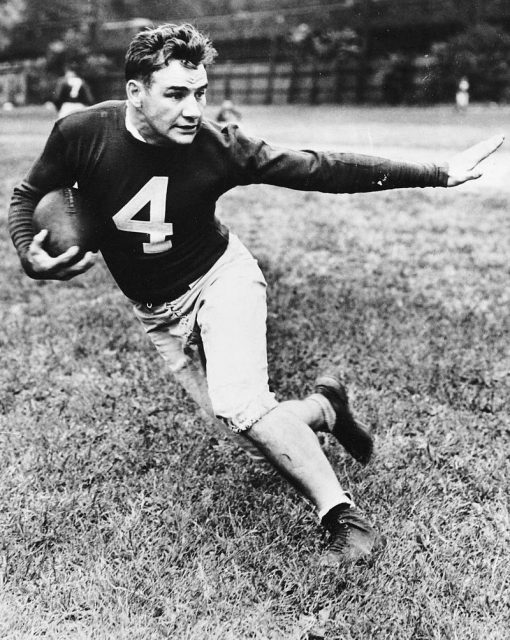
During the war, a surprisingly large number of NFL players were killed overseas. Many of the players went into combat roles – their athletic prowess and toughness made it almost inevitable, and the death toll reflected that. Nineteen active or former players were killed in action, as was an ex-head coach and a team executive.
Of those NFL players killed in action, probably the best-known was Al Blozis, who played tackle for the New York Giants and had been “All-League” (the early NFL’s “All-Pro”). Blozis was 6’6” tall and weighed 250 lbs. Blozis was in the Army, and actually could have claimed exemption from front-line infantry duty because of his size and instead put into the artillery or a support branch, but he would not take the exemption.
During basic training, he set the Army record for a grenade throw – he had been a varsity shot-putter at Georgetown University. In the winter of 1944, just six weeks after playing in the 1944 NFL Championship Game, Blozis was killed by German machine-gun fire as he helped look for some missing men in the snow-covered Vosges Mountains of eastern France.
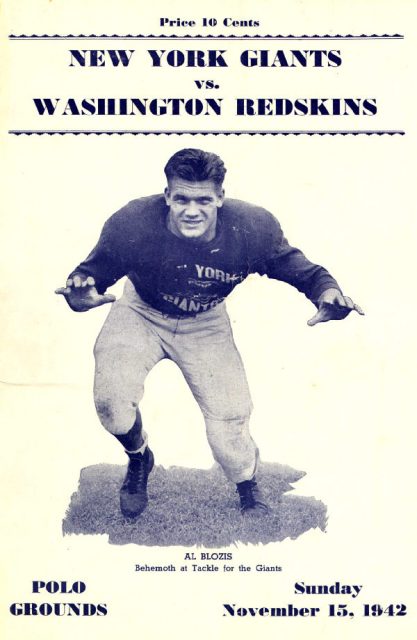
Three men who had played in the NFL or pro football or later had connections to it were awarded the Medal of Honor during the war, one of them posthumously.
The most famous of the three was fighter pilot Joe Foss, who was the leading Marine ace of WWII with 26 victories. He later was commissioner of the AFL from 1960-66 as well as being governor of South Dakota.
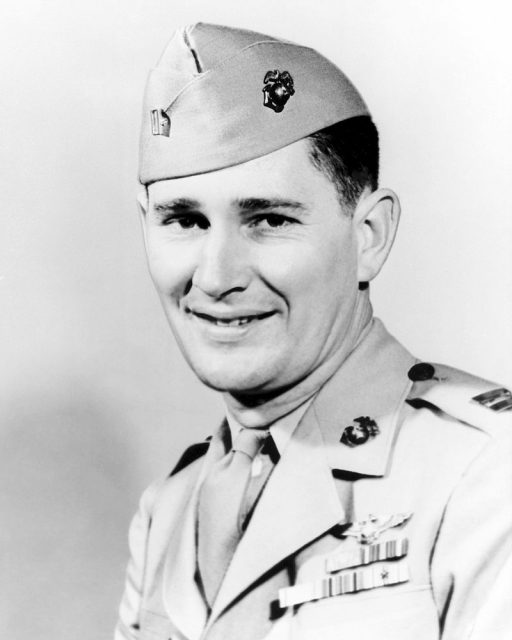
Maurice Britt briefly played end for the Detroit Lions before the war. He fought in North Africa and Italy and was the first man in WWII to be awarded all four of the top medals of valor: the Medal of Honor, the Distinguished Service Cross, Silver Star, and Bronze Star. He also received four Purple Hearts. Football was easy compared to all that.
Andrew Jackson “Jack” Lummus played with the 1941 New York Giants and received the Medal of Honor for actions taken during the Battle of Iwo Jima in 1945. He destroyed many Japanese positions single-handedly, despite being wounded multiple times, before being killed by a land-mine.
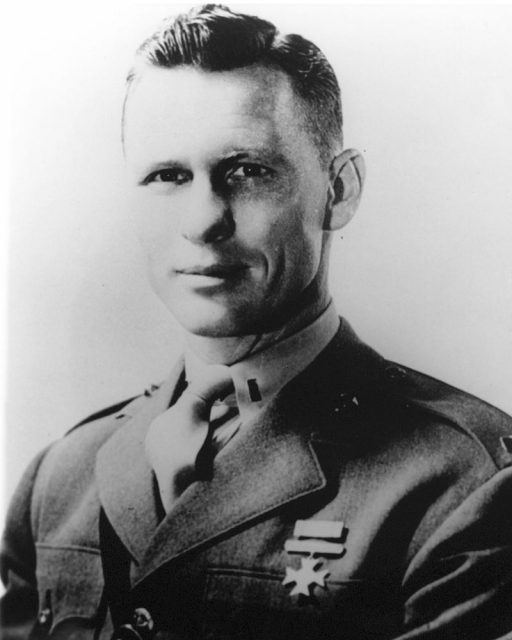
Read another story from us: High School Football Coach Gained Valuable Experience in US Navy in WWII
Perhaps the most famous of them all, at least in regard to football, was legendary Dallas Cowboys coach Tom Landry. At 19, he enlisted in the Army Air Corps and flew 30 missions in a B-17 over occupied Europe, surviving a crash in Belgium on his way back from bombing a German armaments plant in Czechoslovakia. He was on the real “America’s Team” long before he coached the other one.
